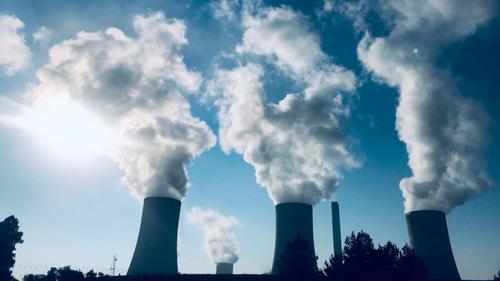Loadshedding
Eskom – South Africa’s struggling energy giant

It was once a source of national pride. According to Energy News, this award-winning firm powered South Africa’s mining boom and later brought electricity to black communities left behind by apartheid. Today, a hundred years after its birth, Eskom, the fallen energy giant, has experienced a spectacular fall from grace. South Africa’s energy giant is crippled by debt, beset by corruption scandals, and unable to keep the lights on. In addition, the record power cuts imposed by the utility, which provides about 90 per cent of the country’s electricity, have exasperated families and businesses. Kyle Cowan, author of “Sabotage,” a book detailing Eskom’s troubles, describes Eskom as a source of enormous frustration and ridicule for South Africans today.
A meme circulated on social media on Wednesday to mark the corporation’s centenary summed up the bitter mood. It depicted a picture of a bowl of raw cake batter, uncooked due to the blackouts, accompanied by the message, “We hope you enjoy the cake we made for you.” Eskom prides itself on its long history, closely intertwined with that of modern South Africa. It played a significant role in electrifying the country, starting from Kimberley. With this diamond mining hotspot, electric street lights were introduced in 1882. Eskom, originally known as the Electricity Supply Commission (ESCOM), was established on March 1, 1923, to boost industry and mining activities.
While Eskom’s early achievements were remarkable, underlying issues eventually contributed to its downfall. The focus on electrifying millions of homes and keeping electricity prices low after the democratic elections in 1994 did not have sufficient investment in additional capacity. Most of the power stations are now over 45 years old and frequently break down, leaving South Africans without electricity for up to 12 hours a day. According to Cowan, Eskom has been mismanaged into the ground. Finance Minister Enoch Godongwana acknowledges the fallen energy giant’s debt as a significant obstacle to upgrading its plants and addressing the company’s woes.
Also read: Eskom’s Power Push: Battling Crime and Driving Full Capacity Operations
Corruption scandals further exacerbated Eskom’s troubles. During Jacob Zuma’s presidency, the utility became embroiled in a massive corruption scandal involving fraudulent contracts and bribes. Millions of dollars were allegedly syphoned off, and former CEOs have been implicated in money laundering and fraud. The attempts to clean up the company have faced internal resistance, with allegations of poisoning attempts against whistleblowers. As a result, Eskom has had a revolving door of CEOs, and corruption has hindered efforts to solve the energy crisis.
Government policies protecting the coal industry have also slowed the transition to renewable energy. Only last year was the licensing threshold for private power generation projects removed. Trade unions have opposed plans to boost private investment in green energy and break up Eskom’s monopoly. President Cyril Ramaphosa recently declared a national state of disaster to tackle the energy crisis. Still, experts caution that there are no quick fixes.
As South Africans hope for relief from the energy crisis, the challenges facing Eskom and the country’s power supply are deeply rooted and require comprehensive, long-term solutions. The fallen energy giant must address its debt burden, corruption issues, and outdated infrastructure while embracing renewable energy and allowing private investment to play a more significant role. Only with a concerted effort and strategic planning can Eskom reclaim its position as a reliable and efficient electricity provider for South Africa.
Also read:





















